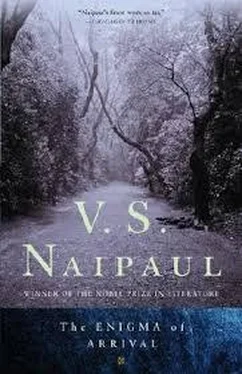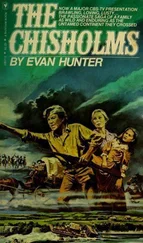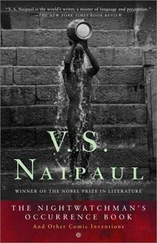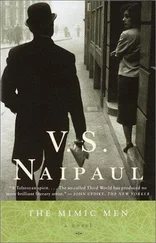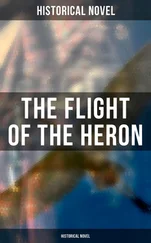V. Naipaul - The Enigma of Arrival
Здесь есть возможность читать онлайн «V. Naipaul - The Enigma of Arrival» весь текст электронной книги совершенно бесплатно (целиком полную версию без сокращений). В некоторых случаях можно слушать аудио, скачать через торрент в формате fb2 и присутствует краткое содержание. Год выпуска: 2012, Издательство: Picador, Жанр: Современная проза, на английском языке. Описание произведения, (предисловие) а так же отзывы посетителей доступны на портале библиотеки ЛибКат.
- Название:The Enigma of Arrival
- Автор:
- Издательство:Picador
- Жанр:
- Год:2012
- ISBN:нет данных
- Рейтинг книги:3 / 5. Голосов: 1
-
Избранное:Добавить в избранное
- Отзывы:
-
Ваша оценка:
- 60
- 1
- 2
- 3
- 4
- 5
The Enigma of Arrival: краткое содержание, описание и аннотация
Предлагаем к чтению аннотацию, описание, краткое содержание или предисловие (зависит от того, что написал сам автор книги «The Enigma of Arrival»). Если вы не нашли необходимую информацию о книге — напишите в комментариях, мы постараемся отыскать её.
The Enigma of Arrival — читать онлайн бесплатно полную книгу (весь текст) целиком
Ниже представлен текст книги, разбитый по страницам. Система сохранения места последней прочитанной страницы, позволяет с удобством читать онлайн бесплатно книгу «The Enigma of Arrival», без необходимости каждый раз заново искать на чём Вы остановились. Поставьте закладку, и сможете в любой момент перейти на страницу, на которой закончили чтение.
Интервал:
Закладка:
At the far end of the lawn, where a new wood began, offering little glimpses of hedges and overgrown paths and covered walks and stone urns, a wood which I was never to explore, at that end of the lawn there was a very large greenhouse. Its timber frame was solid, so solid that from a distance it all looked whole, a greenhouse in use. But the green behind the glass was the green of weeds growing unusually tall in the protected conditions of the greenhouse — a wilderness of weeds; and many of the glass panels had fallen. To me (with what I knew of old Trinidad estate houses, estate houses in the French Caribbean style) there was about this greenhouse something — over and above the fact of its size — that suggested wealth. It had been “overspecified”: its timbers, the depth of the concrete floor (on two levels on the sloping site), its door, its hinges, its metalwork — everything was much sturdier than was strictly necessary. It was the way — perhaps without being asked — builders built for the rich; just as shopkeepers sent up their best to the big house. There was something very satisfying about this style of building; everything seemed so much itself; everything seemed built for long use; there was no fragility, no anxiety.
Over the hill, Jack also had a greenhouse, at the back (or perhaps the front) of his cottage, facing the old farmyard. That greenhouse would have been bought from a catalog, like those advertised in the magazines with the television or radio programs. And how frail Jack’s greenhouse had always looked, how slender its timber frame, how fragile its thin glass, even its floor of concrete! And indeed, when its time had come, how quickly it had all gone, all but the concrete floor (and even that had later disappeared)! How quickly it had been cleansed of its greenhouse spirits! But this manor greenhouse, after two decades of neglect, still stood and from fifty yards still looked solid and whole, its timbers still painted, its thick concrete floor still uncracked, its door swinging easily on its hinges. It would have been the work of a day to clean it inside, and the work of less than a week to recommission it again, to replace its wilderness with order.
Bush inside the great greenhouse, bush outside. Pitton’s lawn mower didn’t come here until late in the season; and then, as everywhere else after the lawn mower had been, the grass showed level and flat and lawnlike and tended. But, before that cut of Pitton’s, it was necessary to hack through the nettles and the bush that grew thick and fast in the dampness to get to the first of the bridges that led across the water channels and creeks of the water meadow to the riverbank.
At the other end of the lawn, where the water meadow met the orchard, there was a barbed-wire fence in a ditch, in the midst of the water bush, to deter intruders. At this end there was only bush and something like forest debris. But here, in the days of the old life of the manor, there had been a series of railed timber bridges over the channels — channels which, overgrown with willows that had then been blown down by equinoctial gales, had become like forest creeks: water appearing to be black over old leaves and mud, until you noticed the clear clean colors of the leaves and the sky that the water reflected. In these hidden black creeks (so unlike the open meadows with yellow irises at the other end) there were often mallards. They took fright at one’s approach, so used were they to their untroubled possession of these waters, or a particular willow-blocked arm of a creek.
The bridges over the creeks of the water meadows had been built to high specifications; but over the years they had rotted in the water and had been further broken up by the growth of vegetable matter, even sturdy, tall-stalked nettles, and especially by the growth of the roots and trunks of willows. There still remained, that first spring of my walks and discoveries, a heavy gate at the end of the first bridge. This gate dragged; but its posts, though black and green with damp and disagreeable to the touch, still stood, and the gate could still be pulled shut and latched with a rusting catch. As a gate, a barrier, it was meaningless. The levels of ground and water had changed; the gate no longer guarded a dry walk across the water meadow. One could simply walk around the gate. There was a merest dip in the ground now, and the only inconvenience came from the nettles. But the nettles were everywhere.
At one stage of this cross-meadow walk the weeds and reeds and willows and other wild growths were so tall it was hard to see the river. Then, quite suddenly, from the very last bridge — with many broken planks, big rusted nails alone remaining whole, the planks they had fixed having rotted away altogether — suddenly from the last bridge the end of the bush was clear, and the trimmed path along the river-bank, beside the collapsed boathouse.
This boathouse was a spectacular ruin. The mooring for the boat or boats was in a creek, one of the old channels of the water meadow. The thick timber posts or pillars of the corrugated iron-roofed shelter stood on either side of the creek. But tame though the river looked — a few feet deep, a few feet wide — the water it channeled was a force of nature, not wholly predictable; and the banks of that river and its inlets were constantly changing. The boathouse creek, widening or simply shifting, had caused the boathouse to collapse on one side. The angle of collapse, the rotting timber, the black-looking water, the rusting corrugated iron suggested a tropical river ruin, somewhere on the Orinoco or Amazon or the Congo. And yet, passing this ruin, and as though belonging to another order of nature, another order of society almost, was the trimmed path along the riverbank.
It was to that easy path, a path for fishermen, that the water-meadow bridges were meant to lead. And the river itself flowed tidily and gently; and neat planks bridged the channels from the wet meadows to the main river. It was the hand of man, the hand of the water bailiffs and people like them, that suggested an orderly nature. Left to itself, the river, like the water meadow at the back of the manor, would have become a forest ruin. It took only one collapsed willow — blown down during a gale, say — to create a mess in the river: the banks wrecked, easy passage gone, tangled islands of river weeds and river dross with rippled skins of milky-brown scum building up in a few days between the branches.
The color of the river depended on what grew on the banks. And small though the scale was, the bank was varied. Where there were tall reeds or grasses on the water’s edge, and the bank was overhung with trees, and if there were little indentations — miniature coves — in the bank, then the water was dark green, deep-seeming, and mysterious. Where the bank was clear the water was clear, showing the white sand or chalk of the bed or the rippling green river weeds.
There came a stage on my walk along the riverbank when I stood directly in front of the water meadow where the yellow irises grew. Beyond that was the old orchard, with the box enclosure that lay to one side of my cottage. Above the orchard and the vegetable-garden wall I saw the roof and chimneys of my own cottage below the beeches, and was surprised all over again, every time, that that was where I lived.
Not far beyond this point the walk that was permitted to me came to an end. Beyond that was another river “beat,” belonging to another landowner, and though it would have been easy to climb over the makeshift fence, I preferred not to do so.
The river curved here. On the opposite bank the down ended abruptly in a wooded cliff, giving a great depth and a hint of surrounding forest to the river color. There was also a new channel here from the bare down, a spring breaking out of the chalk and quickly turning into a noisy cascade. So that again, in this neat, tame, smooth landscape, with a bare green-white down and with a river a few feet deep divided neatly into numbered beats, there was a reminder of the unpredictable force of water. Old corrugated-iron sheets served as hatches in the new channel: an unexpected touch, in a landscape without people, of the urban slum.
Читать дальшеИнтервал:
Закладка:
Похожие книги на «The Enigma of Arrival»
Представляем Вашему вниманию похожие книги на «The Enigma of Arrival» списком для выбора. Мы отобрали схожую по названию и смыслу литературу в надежде предоставить читателям больше вариантов отыскать новые, интересные, ещё непрочитанные произведения.
Обсуждение, отзывы о книге «The Enigma of Arrival» и просто собственные мнения читателей. Оставьте ваши комментарии, напишите, что Вы думаете о произведении, его смысле или главных героях. Укажите что конкретно понравилось, а что нет, и почему Вы так считаете.
